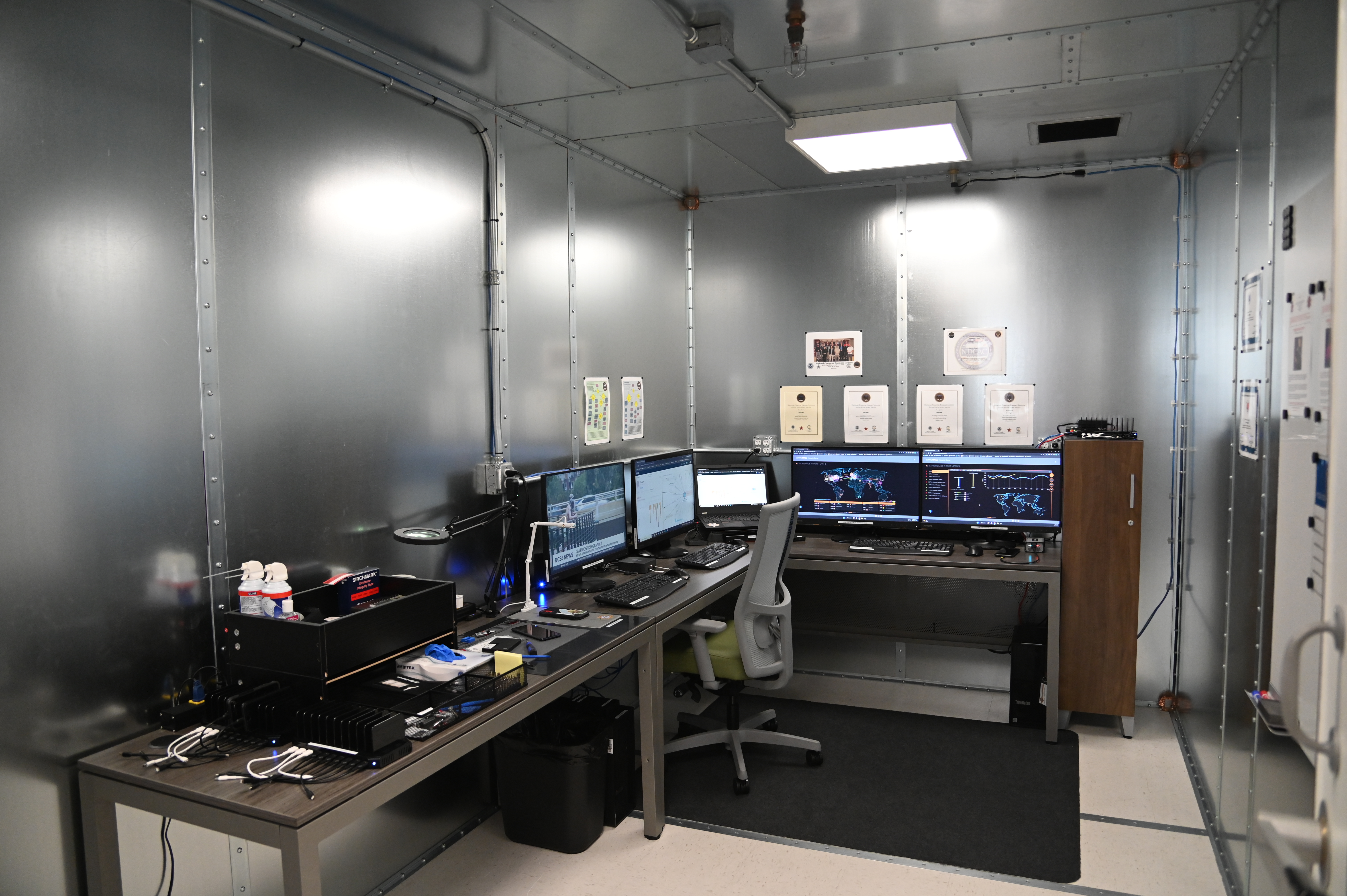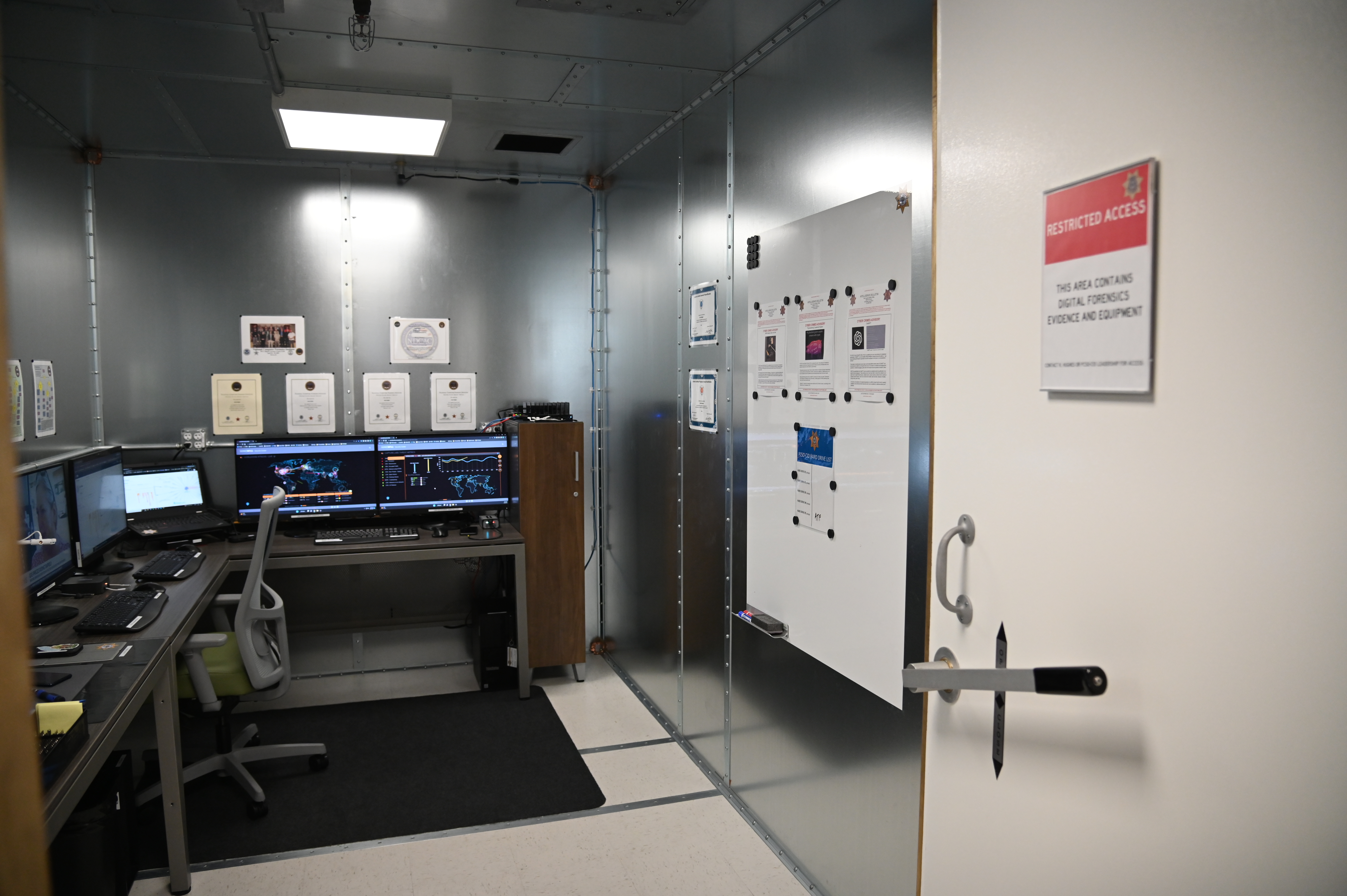
How the Polk County Sheriff’s Office Built a Digital Forensics Powerhouse in 90 Days
Evidence gathered from digital devices has become the foundation for building cases against bad actors involved in crimes of every type from homicides to financial fraud. As criminal acts continue to climb, savvy law enforcement heads like Polk County, Iowa Sheriff Kevin Schneider are emphasizing the importance of having the right tools, lab facilities and trained personnel to solve more crimes faster and accelerate justice for those who have been harmed.
Building on a Vision to Serve the Community and Beyond
 “The mission of the Polk County Sheriff’s Office includes the utilization of advances in technology to detect and solve crimes, and use all available resources to protect and serve the public,” Sheriff Schneider began.
“The mission of the Polk County Sheriff’s Office includes the utilization of advances in technology to detect and solve crimes, and use all available resources to protect and serve the public,” Sheriff Schneider began.
“In today’s electronic-based world, it is vital that law enforcement agencies employ the appropriate methods and tools to better understand the individuals and circumstances we are dealing with.
“Evolving technology necessitates innovative approaches. Just as fingerprints in the early 20th Century revolutionized crime-solving and the use of DNA technology for biological evidence in the late 1980s helped identify or exonerate suspects, digital forensics identifies, preserves, collects, analyzes and reports on data from electronic devices. Law enforcement personnel who specialize in analytical methods are one more component for a successful criminal investigation.”
Recognizing that digital evidence is now fundamental to nearly every type of criminal investigation, Sheriff Schneider began building a strategic vision for his department by establishing a dedicated digital forensics lab with an analyst to lead it.
 Criminal Intelligence Analyst Kevin Hughes, was brought on board to build the digital forensics lab for Iowa’s Polk County Sheriff’s Office into a state-of-the-art facility. And he did it in just 90 days. When asked how he was able to build the sophisticated lab in such a short time, Hughes is quick to credit the support he received from his command staff and the power of Cellebrite’s industry-leading technology.
Criminal Intelligence Analyst Kevin Hughes, was brought on board to build the digital forensics lab for Iowa’s Polk County Sheriff’s Office into a state-of-the-art facility. And he did it in just 90 days. When asked how he was able to build the sophisticated lab in such a short time, Hughes is quick to credit the support he received from his command staff and the power of Cellebrite’s industry-leading technology.
Today, the Polk County digital forensics lab serves 18 law enforcement agencies under the Sheriff’s Office’s jurisdiction, in addition to supporting federal and state partners. Despite being a one-person operation, the lab is a hub of activity, processing an average of 16 devices a month—totaling more than 500 devices in its first three years of service—with no backlog.
“Cooperation and sharing resources among law enforcement agencies promotes efficiency, as well as effectiveness,” Sheriff Schneider said. “We are fortunate to have 21st Century police technology. Not all police agencies may be able to justify possessing specific equipment, but collaboration with other law enforcement agencies promotes our common goal of protecting and serving the community in which we live.”
The Journey to Justice: From Corrections to Criminal Intelligence
Hughes’ digital forensics career began at the South Carolina Department of Corrections within the Office of the Inspector General where he was tasked with extracting data from confiscated cell phones that prisoners and organized gangs were using to peddle contraband, corrupt staff and fly drones. This is where he first encountered Cellebrite’s solutions. “I was told, ‘here’s Cellebrite Premium,’” Hughes recalled. “’You’re going to start downloading cell phones.’”
“I was mesmerized,” Hughes confessed, yet despite having no digital forensics experience or training, he jumped in and quickly gained proficiency. “I’m the endpoint that ultimately tries to do my best to make sure the workflow, technology and tactics are up to speed for the lab,” he said proudly, “so when there’s a need for the lab to be utilized, we can respond appropriately.”
A Trial by Fire: The Scott Smith Case
Shortly after the Polk County lab became operational, it faced a critical test. A deputy conducting a routine traffic stop was fired upon by the driver, quickly escalating the incident into a high-stakes standoff. As he escaped on foot, the suspect fired multiple shots at the deputy pursuing him before barricading himself in a motel.
After the suspect’s arrest, Detective John Pohlman canvassed the area for hours and finally found his cell phone—cracked but still operational. Back at the lab, Hughes used Cellebrite Inseyets (formerly known as Cellebrite Premium) to determine the device’s passcode, unlocking a treasure trove of information.
“There were photos of the firearm on the device that was recovered on the scene [of the motel shootout], videos and photos of him using narcotics prior to the shooting and text messages from that device during the standoff where he’s texting other metro criminal actors,” Hughes recalled.
The evidence not only solidified the case against Smith, but also implicated him in a broader criminal enterprise involving human trafficking, narcotics and firearms distribution. Evidence found on Smith’s phone also pointed to a second criminal he was working with who was also ultimately apprehended following a shots fired call involving the Des Moines Police Department months later.
“Because of a [single] cell phone being found on scene after our shootout, both offenders [were] eventually federally sentenced,” Hughes explained. “Both crimes [were] tied together through that one device, which led to a second device and [and more evidence] through persistent monitoring of Smith while he was in our custody.”
“Just off of one cell phone, there’s no way, without the technology, that you’d ever be able to make those kinds of connections,” Hughes said. This single extraction gave his wing of the agency valuable intelligence that they’re still using in ongoing investigations more than two years later.
“Knowledge as to who we are dealing with in an investigation helps provide insight regarding what a suspect may be thinking, his/her emotional state, and, as in the Smith case, weapons that the individual possessed,” Sheriff Schneider added. “All of which provides our deputies with information to hopefully protect themselves, the suspect and the community, especially in tense and dangerous situations.”
Building a Tech-Forward Future With Cellebrite
The Polk County Sheriff’s Office has always been forward leaning on technology under the leadership of Sheriff Schneider and Hughes believes in following command staff objectives and requirements to stay ahead of the curve. Regarding the rise in cryptocurrency investigations and the use of AI to solve crypto crimes, Hughes said, “The tech is going to come downhill one way or another….For someone like me that works in a multifunctional job…there’s no reason why implementation of AI wouldn’t speed up, help, and better process my workflow.”
Hughes sees solutions like Cellebrite Inseyets, which is powered by AI, as the future for investigations. By correlating data from multiple sources into a single view, Inseyets can automate the time-consuming manual work of connecting the evidentiary dots.
“That’s where I see the collection of digital evidence married up with other sourcing [to solve crimes], Hughes said, adding the importance of having “intelligence personnel that can sit in a dedicated seat and that can say, here’s the output, here’s the response and here’s the information you need,’ without having to click through 15 portals and compile that [information] manually.”
Polk County has also had success using the Chainalysis integration in Inseyets.PA to investigate a surge in “pig butchering” crypto scams. By obtaining consent to extract data from victims’ phones, Polk County detectives have pieced together numerous comprehensive timelines of these fraudulent acts.
“We have had dozens of victim phones extracted using Cellebrite equipment that ultimately populated a timeline of these scams,” Hughes said. “Instead of a detective spending hours debriefing a victim that may not be able to recount all elements of the scam, we can within hours have pre-populated artifacts where we can look through thousands of text messages, emails and web search history. We can then formulate our own investigative timeline to target these fraudsters and protect victims from revictimization.”
A law enforcement agency, big or small, should always seek to improve its ability to operate in today’s world,” Sheriff Schneider said. “Our effectiveness and reasoning ability depends upon the resources that we possess to investigate crime. Using methods and tools that interact with today’s technology is critical for a law enforcement agency’s investigative process.
For Hughes, it all comes down to serving the community. “I think the public is more comfortable knowing that their agency is working in their best interest, which is our purpose in being here,” he said. “For me it’s getting the training and tech I need to do the best that I can if someone’s having their worst day.”